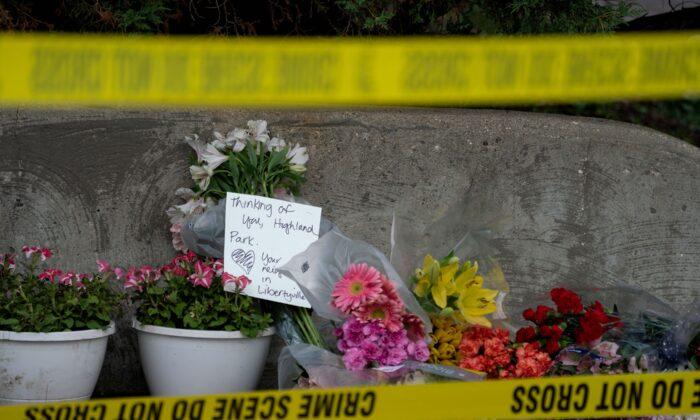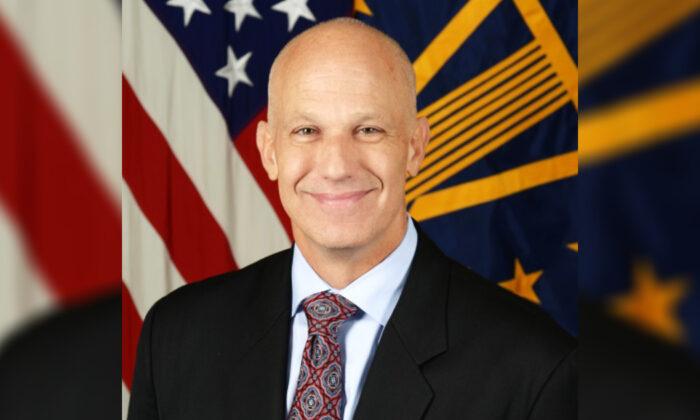Commentary
Insanity is repeating the same mistakes and expecting different results, according to the Hazelden Foundation (not according to Einstein, for the record).
The latest horrifying examples: Atlanta; Boulder, Colorado; Orange, California; Rock Hill, South Carolina; and Indianapolis.
Take just Atlanta, for instance. On March 16, Robert Aaron Long shot and killed eight people in the Atlanta metro area, telling public officials he was a sex addict. When police arrested him, he was on his way to Florida to shoot up the porn industry as well. Yet in the shooting’s wake, too many policymakers repeated the same mistakes and expected different results.
For instance, like many Democratic members of Congress, Rep. Ayanna Pressley (D-Mass.) charged in response to the mass murder that “white supremacy” is a “threat to all of our communities, and we must call out the targeted, violent attacks on our AAPI neighbors.”
(For those wondering, in this case, one assumes “AAPI” refers to the new politically correct acronym for Asian Americans and Pacific Islanders.)
Similarly, Rep. Ted Lieu (D-Calif.) tried to pin the shooting on President Donald Trump discussing the China virus: “One year ago, we had a former President and White House officials inflaming hate against Asian Americans. Some elected officials continue to use ethnic identifiers in describing the virus, which adds fuel to the hate. If you are one of those officials, please stop. #StopAsianHate.”
Likewise, America’s mainstream media decided to explicitly ignore the facts. For instance, Jennifer Rubin, the leftist shill deceptively dubbed a “conservative” at The Washington Post, wrote on Twitter, “Just as we do not take racists’ excuses that they are not saying racist things,” we shouldn’t take the shooter’s own word for why he acted as he did.
So to be clear, a maniac shoots six Koreans and two whites, says it’s because of a sex addiction—yet according to the Democrats and media, it’s actually because of white supremacy, racism, and Trump pointing out that the Chinese Communist Party (CCP) virus, which comes from China, came from China.
Because of this, of course, they’re all repeating the same mistake they always make: They want to take your guns.
‘Deinstitutionalization’
Here’s the real story: From 1960 to 1964, there were no mass shootings at all in the United States. None.But by the mid-1960s, liberals had decided what we really needed was “deinstitutionalization”—that is, to spring every insane individual they possibly could from our asylums. The American Civil Liberties Union (ACLU), for instance, pursued a quixotic campaign that led to a landmark 1975 ruling by the Supreme Court that states can’t confine a “non-dangerous” individual who can survive on his own or with help.
The problem is, who decides who is non-dangerous?
Whoever it is, it’s the wrong people. Since the 1960s, more than nine in 10 mental patients were let out of asylums, according to one source. In 1955, state psychiatric hospitals held almost 600,000 mentally ill patients. By 2010, those hospitals’ entire capacity had dropped to less than 10 percent of that figure.
And, like clockwork, mass killings began to rise. Overall, at least one-third of mass killings are carried out by those with “untreated serious mental illness.”
More specifically, a recent U.S. Secret Service study found 25 percent of mass killers had been hospitalized for psychiatric treatment or prescribed psychiatric medication before their attacks, 32 percent were actually psychotic, and a towering 64 percent of the attackers “experienced mental health symptoms prior to their attack.”
A study of mass shooters by the far-left Mother Jones found that “a majority were mentally ill—and many displayed signs of it before setting out to kill.”
A sweeping study of mass killers from 1913 until 2015 found that 23 percent were mentally ill—but after deinstitutionalization, between 2000 and 2015, the proportion rose to 32 percent.
A summary analysis of mass killing studies explicitly states that in these results, “we see the full effects of the closing of state mental hospitals and reduction of community psychiatric services.”
One example: In 1999, a schizophrenic off his meds pushed Kendra Webdale in front of a New York City subway train to her death. The incident—along with a rash others—led to Kendra’s Law, supposedly giving courts the power to compel crazies to accept treatment as a condition of living free.
The ACLU opposed the bill.
Mass Incarceration
It didn’t matter—the floodgates were open. So many mentally ill Americans committed crimes that as the asylums emptied, the prisons filled.In fact, from about 1965 to 2000, while the mental hospitalization rate per 100,000 adults plunged from nearly 500 to below 50, the prison incarceration rate soared from just over 100 to nearly 600. That left the total institutionalization rate almost exactly the same as when liberals started letting the insane out of the asylums.
And, presto: Mass incarceration. In 1880, severely mentally ill inmates constituted less than 1 percent of the American prison population; a century later, that percentage had increased 10-fold, according to one source.
Similarly, a more recent study found 10 percent of inmates imprisoned for all homicides—not just mass killings—were diagnosed with severe mental illness.
Today, reports James Panero, an expert on deinstitutionalization, “the Los Angeles County Jail has become the largest de facto psychiatric inpatient facility in the U.S.; New York City’s Rikers Island is second.”
Note that the difference between now and the 1960s is that the equivalent of the entire population of the asylums committed crimes, including mass shootings but also just garden-variety rapes, maimings, and murders—with victims strewn behind them.
Severely mentally ill killers following deinstitutionalization’s completion in 2000 included Seung-Hui Cho, who murdered 32 at Virginia Tech in 2007.
They included Jared Lee Loughner, the diagnosed schizophrenic who killed six people in Tucson, Arizona, in 2011.
They “most likely” included James Holmes, who killed 12 in a movie theater in Aurora, Colorado, also in 2012.
According to a local police chief, they included William Spengler, the Christmas Eve shooter who set his own house on fire in order to ambush firefighters in upstate New York, killing two along with his sister, before committing suicide, yet again in 2012.
Finally, they definitely included Adam Lanza, who killed 20 first-graders and six adults at Sandy Hook Elementary School in Newtown, Connecticut, again in 2012.
Instead of more gun control, here’s a novel idea, which Trump was panned for saying: Why don’t we stop the ACLU from keeping so many violent maniacs in our midst?
That is, to stop mass killings, why not lock up maniacal murderers, rather than taking sane people’s guns?
Because otherwise, another allegedly insane attacker might shoot up a King Soopers in Boulder, Colorado, killing 10 including a policeman.
And a little boy might die in his mother’s arms as she was trying to save him during a “horrific massacre” in Orange, California.
And in Rock Hill, South Carolina, a 70-year-old man, his wife, and their two grandchildren might die at the hands of a former NFL player whose father said his son’s lifetime in football “messed him up.”
And a killer who posted to his Facebook account before the shooting, “I hope that I can be with Applejack in the afterlife, my life has no meaning without her”—Applejack being a character in My Little Pony—and whose mother contacted law enforcement to report he might try to commit “suicide by cop,” and who was temporarily committed for mental health treatment at the time, when officials seized a shotgun from him, but was released, might murder nine Americans including himself in Indianapolis.
After all, the definition of insanity is doing the same thing and expecting a different result.
And you don’t have to be Einstein to see it.
Christopher C. Hull, Ph.D. serves as president of Issue Management Inc., a Washington, D.C.-based public affairs firm, as senior fellow at Americans for Intelligence Reform, and as an adjunct professor at the Institute of World Politics.
Views expressed in this article are opinions of the author and do not necessarily reflect the views of The Epoch Times.





